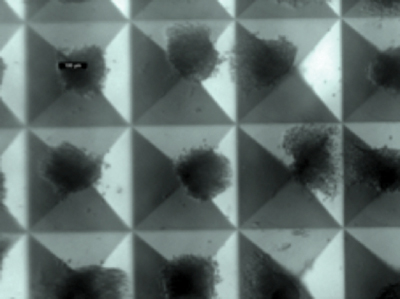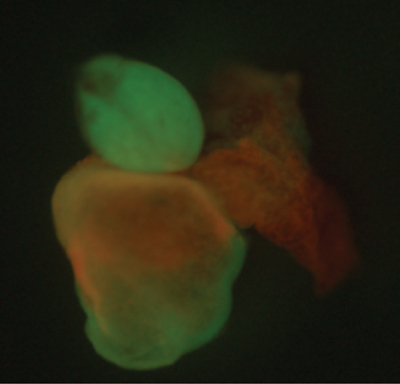
[br]
About
Heart regeneration in the zebrafish / Mechanisms of induced reprogramming to pluripotency / Disease modeling through induced pluripotent stem (iPS) cells / Induced reprogramming to cardiogenic mesoderm / Bioengineering approach to heart muscle differentiation
During embryo development, the potency of the zygote is deployed through coordinated and stereotypical changes in cell behaviors and processes of tissue patterning, ultimately resulting in the formation of an entire, highly complex organism in a relatively short period of time. Throughout this process, the developmental potency of individual cells, i.e. their ability to give rise to cells of a different type than their own, is progressively lost, so that somatic cells in adult individuals retain very limited potency (such as in rare adult stem cells) or show no potency at all.

Our laboratory is interested in understanding the mechanisms that govern the degree of potency of human somatic cells, and how it can be experimentally increased for conditions where doing so may be of biomedical relevance. Specifically, the context in which we investigate these issues is mainly centred on the paradigm of cardiac regeneration/repair.
Heart-related diseases are the main cause of mortality in the world, with ischemic heart disease being the single most frequent condition accounting for the death toll. This results from the very limited ability of the mammalian heart to regenerate on its own, and underscores the pressing biomedical need to finding ways for potentiating this ability (heart regeneration) and/or providing new cardiac cells to replace the lost or damaged ones (heart repair). We pursue the first approach by studying the process of heart regeneration in the zebrafish, an organism with a remarkable capacity for regeneration. Natural regeneration is a biologically fascinating phenomenon in which somatic cells may regain developmental potency, and we hope that understanding the molecular and cellular mechanisms that control this process will help devising strategies to potentiate the regeneration of adult mammalian hearts.

For achieving heart repair, in turn, our research is aimed at generating functional human heart muscle cells that could be used for transplantation. For this purpose, we investigate ways to manipulate the developmental potency of human somatic cells so they become pluripotent (i.e. regain the potency of cells in the early embryo), and then study how these so-called induced pluripotent stem cells (iPSC) can be instructed to differentiate into functional cardiomyocytes. In addition, since iPSC can be generated from disease-carrying cells, many laboratories including ours are exploring the possibility of using patient-specific iPSC to generate disease-relevant cell types in which to investigate the pathogenic mechanisms of disease initiation and/or progression.
Overall, our research takes advantage of a variety of experimental paradigms (zebrafish heart regeneration, human iPSC generation and differentiation), approached from a multi-disciplinary perspective, ranging from bioengineering approaches to 3D stem cell differentiation to single-cell genetic lineage tracing analyses and genetic manipulation of human cells, aimed at tackling important current issues in biology and biomedicine, such as the mechanisms that control the establishment and maintenance of developmental potency, the initiation and progression of the regenerative process, and the differentiation and functional maturation of human cardiomyocytes, and the development of genuinely human models of human disease.
Projects
National projects
| Aproximación de bioingeniería a la regeneración/reparación cardiaca | I+D-Investigación fundamental no orientada | Ángel Raya |

